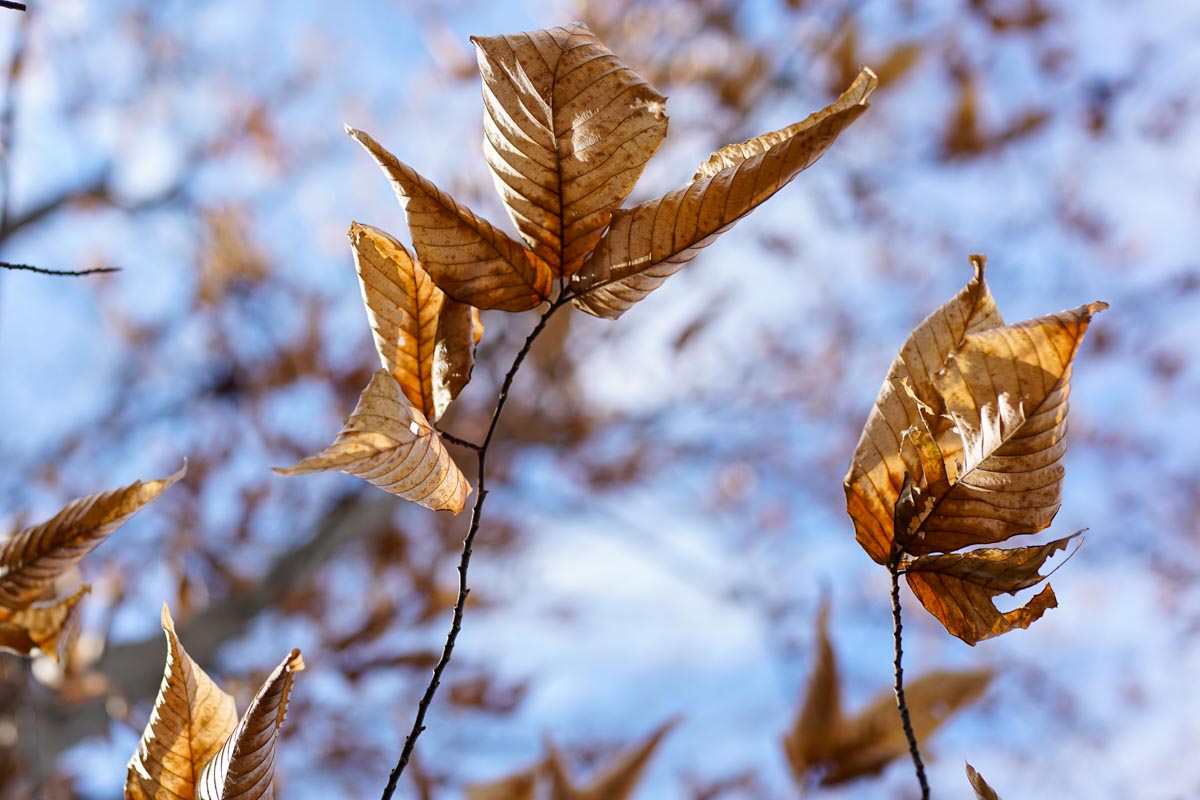In a forest full of bare branches, beech and oak trees are the exception, clinging to slowly tattering tan leaves. On windy days, their leaves blow back and forth like tiny banners. In this photograph these dry beech leaves clinging to branches hold on in a process known as marcescence, and the trees are called everciduous. As a collector of words, I enjoy these ethereal terms.
Most of my yard is a temperate deciduous forest. The majority of trees lose their leaves relatively synchronously in autumn. At the leaf petiole, which is the base of the leaf stem, there is an abscission layer. For most trees, the cells formed here are like scissors, cutting the leaf away and letting it fall. In marcescent trees, this abscission process isn’t activated until spring. Some of these leaves hold on so tight they don’t drop until fierce spring winds snap them off.
There are almost as many theories on why trees keep their leaves as there are leaves still holding on to the beech trees in my woods. The dry leaves may protect the new leaf buds from drying out over winter. Most trees lose their leaves to prevent moisture loss over winter. But if the developing buds of new leaves might disastrously dry out, wrapping them in the old leaves might help them avoid losing moisture. In spring as new leaves emerge, these enlarging buds will swell to push off the old leaves.
Since these clinging dry leaves are most often found on younger trees, and the lower branches of larger trees, another theory suggests they provide protection from browsing by herbivores like deer. The dead leaves cover and hide the tastier leaf buds and twigs. It has even been theorized the rattling noise of the dry leaves may discourage browsing. To be honest in my woods the deer don’t seem discouraged by much of anything, but trees need to try anything to protect against their incessant appetites.
They may provide a sort of mulch at a time when nutrients are most needed when they fall in spring. Freshly fallen leaves could be similar to spreading compost and give the tree’s new growth badly needed fertilizer. Since young trees need to compete with the older giants of the forest, it may be especially important for these juvenile trees to get this extra burst of nutrients as they start growing in their endless competition for light. This leafy mulch may also retain soil moisture because they shade and cover the soil.
We can learn a lot from trees. Like leaves in autumn, at times we hold on wistfully to past seasons. On other occasions, we let go and plunge into new adventures, never looking back. I find a wisdom in the everciduous trees in my forest. They are not quite evergreen or deciduous, instead letting the old nurture and shelter the new, holding on until the very last moment, and then gracefully making way for the fresh future.
